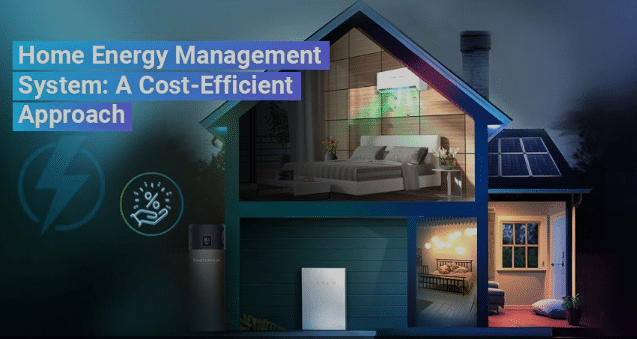An Energy Management System (EMS) for households is a smart solution designed to monitor, control, and optimize energy consumption in a home. It helps homeowners reduce energy costs, improve energy efficiency, and contribute to environmental sustainability. Here’s an overview of how such a system works and its key components:
Key Features of a Household Energy Management System
- Real-Time Energy Monitoring:
- Tracks energy usage of appliances, lighting, heating, cooling, and other devices in real time.
- Provides insights into which devices consume the most energy.
- Smart Scheduling:
- Automates the operation of appliances (e.g., washing machines, dishwashers) during off-peak hours when electricity rates are lower.
- Adjusts heating, ventilation, and air conditioning (HVAC) systems based on occupancy or time of day.
- Integration with Renewable Energy:
- Manages energy from solar panels, wind turbines, or battery storage systems.
- Optimizes the use of renewable energy to reduce reliance on the grid.
- Demand Response:
- Reduces energy consumption during peak demand periods to avoid high electricity costs.
- Can integrate with utility programs that offer incentives for lowering energy use during peak times.
- Remote Control:
- Allows homeowners to control appliances and systems remotely via a smartphone app or web interface.
- Energy Analytics and Reporting:
- Provides detailed reports on energy usage patterns.
- Offers recommendations for improving energy efficiency.
- Integration with Smart Home Devices:
- Works with smart thermostats, smart plugs, and other IoT-enabled devices to create a cohesive energy-saving ecosystem.
Components of a Household EMS
- Smart Meters:
- Measure electricity, gas, or water usage in real time and communicate data to the EMS.
- Sensors and IoT Devices:
- Monitor temperature, humidity, occupancy, and lighting to optimize energy use.
- Energy Management Software:
- The central platform that analyzes data, provides insights, and controls devices.
- Smart Appliances:
- Appliances that can be controlled and scheduled by the EMS (e.g., smart washing machines, refrigerators).
- Energy Storage Systems:
- Batteries that store excess energy from renewable sources for later use.
- User Interface:
- A mobile app or web dashboard where homeowners can monitor and control their energy usage.
Benefits of a Household EMS
- Cost Savings: Reduces energy bills by optimizing consumption and leveraging off-peak rates.
- Environmental Impact: Lowers carbon footprint by promoting energy efficiency and renewable energy use.
- Convenience: Automates energy management, reducing the need for manual intervention.
- Increased Awareness: Helps homeowners understand their energy habits and make informed decisions.
Implementation Steps
- Assess Your Energy Needs:
- Identify high-energy-consuming appliances and areas for improvement.
- Install Smart Devices:
- Equip your home with smart meters, thermostats, and plugs.
- Choose an EMS Platform:
- Select a software solution that integrates with your devices and meets your needs.
- Monitor and Optimize:
- Use the system to track energy usage and make adjustments over time.
- Expand with Renewables:
- Consider adding solar panels or battery storage to further reduce grid dependency.



